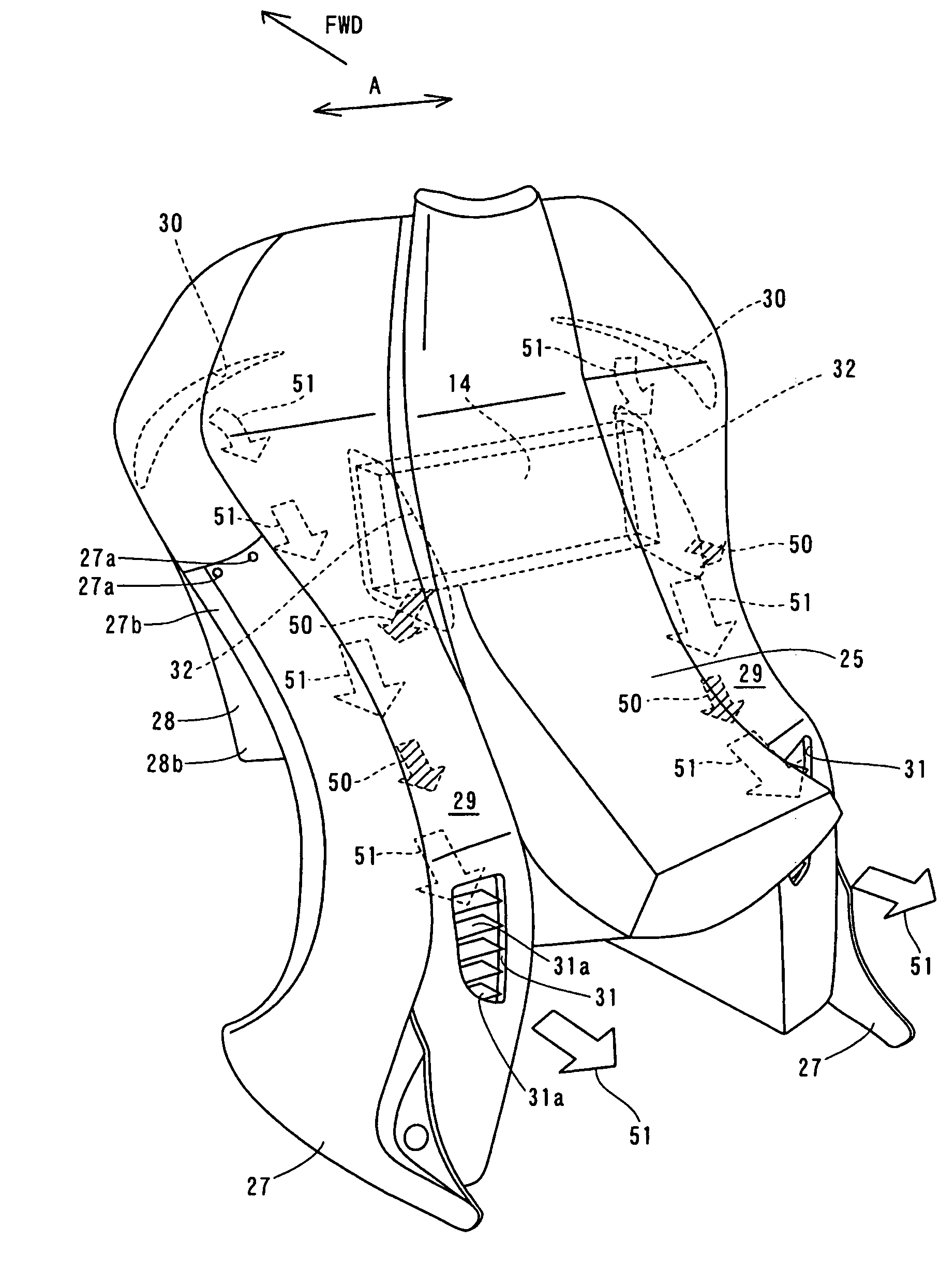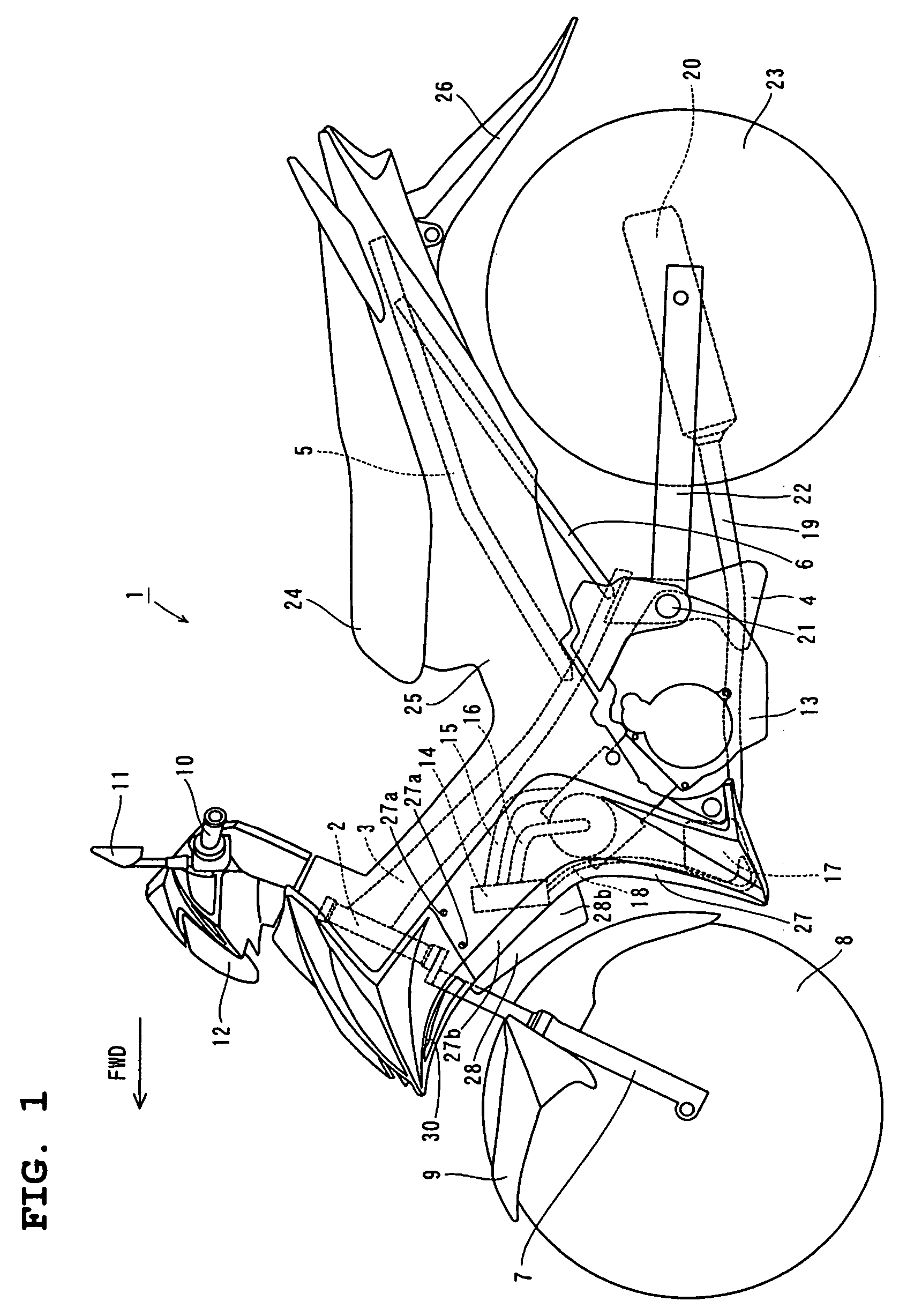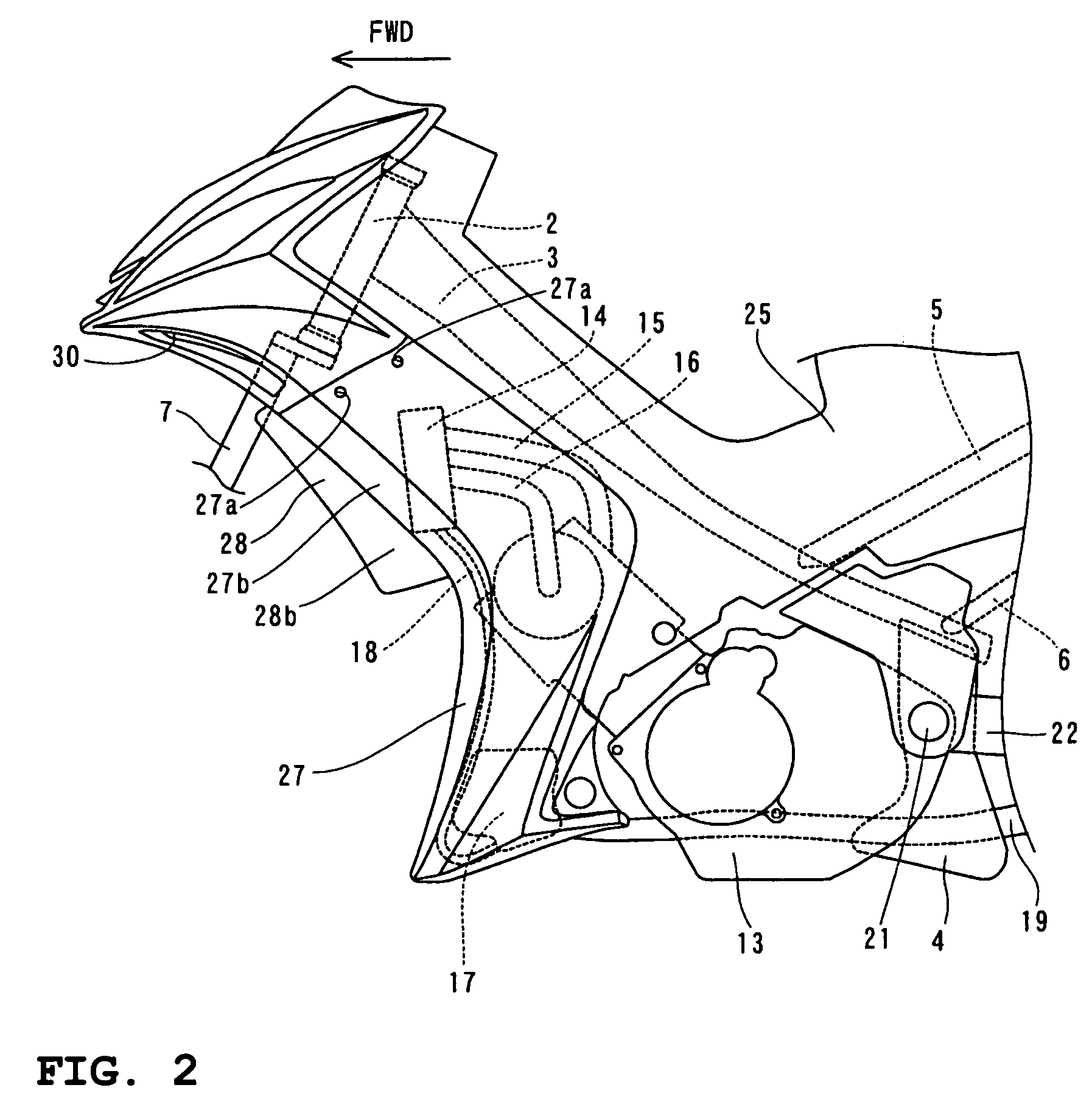Vehicle
a technology for vehicles and radiators, applied in the field of vehicles, can solve the problems of difficult to sufficiently cool the engine, difficult to expose the whole area of the core section of the radiator to the running wind, and difficulty in guiding a sufficient amoun
- Summary
- Abstract
- Description
- Claims
- Application Information
AI Technical Summary
Benefits of technology
Problems solved by technology
Method used
Image
Examples
Embodiment Construction
[0029]Preferred embodiments of the present invention will be described with respect to the attached figures.
[0030]FIG. 1 is a side elevational view showing the overall structure of a motorcycle according to a preferred embodiment of the present invention. FIG. 2 is an enlarged side elevational view of an engine of the motorcycle according to the preferred embodiment shown in FIG. 1 and also the vicinity of the engine. FIG. 3 is a front elevational view of a leg shield of the motorcycle according to the preferred embodiment shown in FIG. 1 and the vicinity of the leg shield. FIGS. 4-16 are illustrations for describing detailed constructions of the motorcycle according to the preferred embodiment shown in FIG. 1. Additionally, in the figures, reference mark FWD indicates “forward” in a running direction of the motorcycle. Also, in the present preferred embodiment, an under-bone type motorcycle is described as an example of a vehicle in which the frame (main frame) of the motorcycle be...
PUM
 Login to View More
Login to View More Abstract
Description
Claims
Application Information
 Login to View More
Login to View More - R&D
- Intellectual Property
- Life Sciences
- Materials
- Tech Scout
- Unparalleled Data Quality
- Higher Quality Content
- 60% Fewer Hallucinations
Browse by: Latest US Patents, China's latest patents, Technical Efficacy Thesaurus, Application Domain, Technology Topic, Popular Technical Reports.
© 2025 PatSnap. All rights reserved.Legal|Privacy policy|Modern Slavery Act Transparency Statement|Sitemap|About US| Contact US: help@patsnap.com



